The West Doesn’t Own Whiteness

By Cassidy Warner
Staff Writer
29/9/2021

South Korean actress Son Ye-jin (Picture Credit: Son Ye-jin)
In the West, there’s a growing belief that whitening beauty products are fundamentally racist, with the anti-racist movement perceiving the beauty standards they promote as the legacy of Western colonialism.
Skin-whitening products that have been sold for generations are now met with outrage by younger consumers who claim they reinforce racist stereotypes. Online discussions call colorism – the perception of beauty as related to skin tone – a “massive problem,” “appalling,” and “mentally scarring.” Even peer-reviewed journal articles are entitled “Is asking for nude lipstick racist?” and “Skin deep:…racism in the online beauty community.”
The conclusion is usually that the almost universal preference for whiter skin is a direct result of Western cultural hegemony; after centuries of imperialism, Western media and advertising continue to overpower other cultures’ beauty standards.
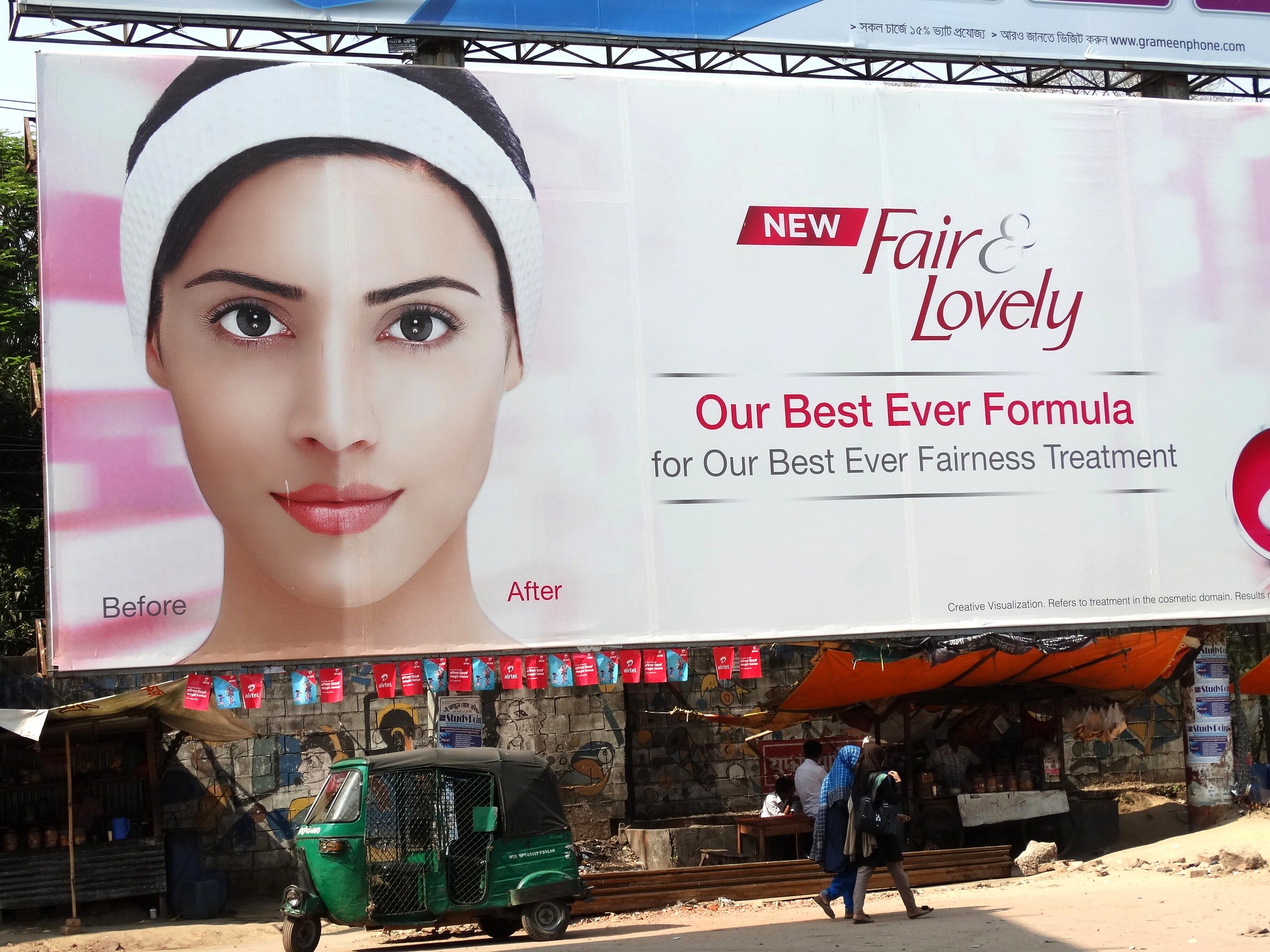
Billboard advertising skin-whitening cream in Bangladesh (Picture Credit: Adam Jones)
Western companies have tried to “fix” this by re-labelling skin-lightening products and removing references to “white/ness,” “fair/ness,” and “light/ness.” But much of Asia has responded with, at best, bewilderment, and at worst, indignation that the West presumes to explain their own beauty ideals to them.
Much of Asia has responded to moves by Western companies to re-label skin-lightening products with, at best, bewilderment, and at worst, indignation.
When the rebranding decisions were announced, a Chinese study found that less than 10% of people approved and over 50% of respondents viewed the efforts as “ridiculous.” Similarly, when Unilever and Johnson & Johnson considered axing the term “bihaku,” a combination of the words “white” and “beautiful,” because of its inherent reference to whiteness, they were told that “bihaku” has nothing to do with Western whiteness: it is non-Caucasian and uniquely Japanese. But Unilever has begun removing it from products anyway.
One of the cognitive misfires here is that the West (and the US in particular), views whiteness primarily through the lens of race: white is juxtaposed against black and then pigeonholed into a false binary. But outside the US, whiteness is not just about race and post-colonial legacies. In East Asia, whiteness existed before the East India Trading Company, before rubber plantations in the Philippines, and long before global advertising campaigns for fair and lovely skin. Hence, despite the West’s heavily publicized moves towards inclusivity, the skin-lightening industry continues to be worth $8.6 billion and is only expected to grow – to $12.3 billion by 2027.
The conclusion is obvious: the West can say whatever it likes about the racism of white beauty preferences, but the rest of the world is not listening. And perhaps they never were.
***
In China, Japan, and Korea, there are long-standing preferences for white skin that have transcended historical periods and otherwise shifting ideals of beauty.
In China, Japan, and Korea, there are long-standing preferences for white skin that have transcended historical periods.
A Japanese proverb older than provenance states that “White skin covers seven defects.” It is not an exaggeration to say that amongst the factors that contribute to Japanese beauty standards, white skin is still considered one of the most important.
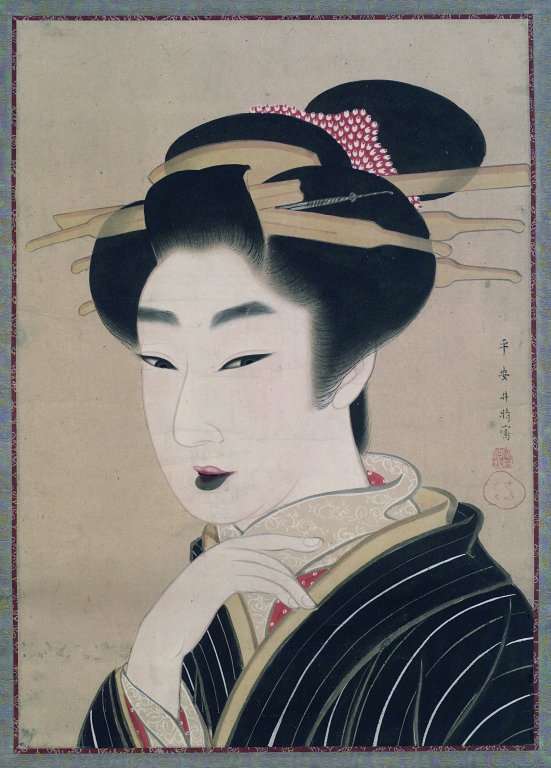
19th-century painting by Gion Seitoku titled Beauty
Hiroshi Wagatsuma’s 1967 essay on Japanese whiteness, a seminal text in the field, calls white skin an aesthetic matter that signifies spiritual refinement. As early as the Nara (710-793 AD) and Heian (794-1185 AD) periods, Japanese women powdered their faces white. The ideal Japanese beauty contrasted paper-white skin against black hair with accents of red makeup on lips, eyes, and cheeks.
Lady Murasaki, who wrote during the 11th century, frequently coupled whiteness and beauty. The Tale of Genji (generally considered the world’s first novel) describes the book’s heroines thus:
Her color of skin was very white and she was plump with an attractive face…very beautiful.
Her color was very white…and looked noble.
Lady Murasaki also wrote similar descriptions in her own diary of white, beautiful women. For example, of Miya no Naishi:
The contrast between her pale skin and her black hair sets her apart from the rest.
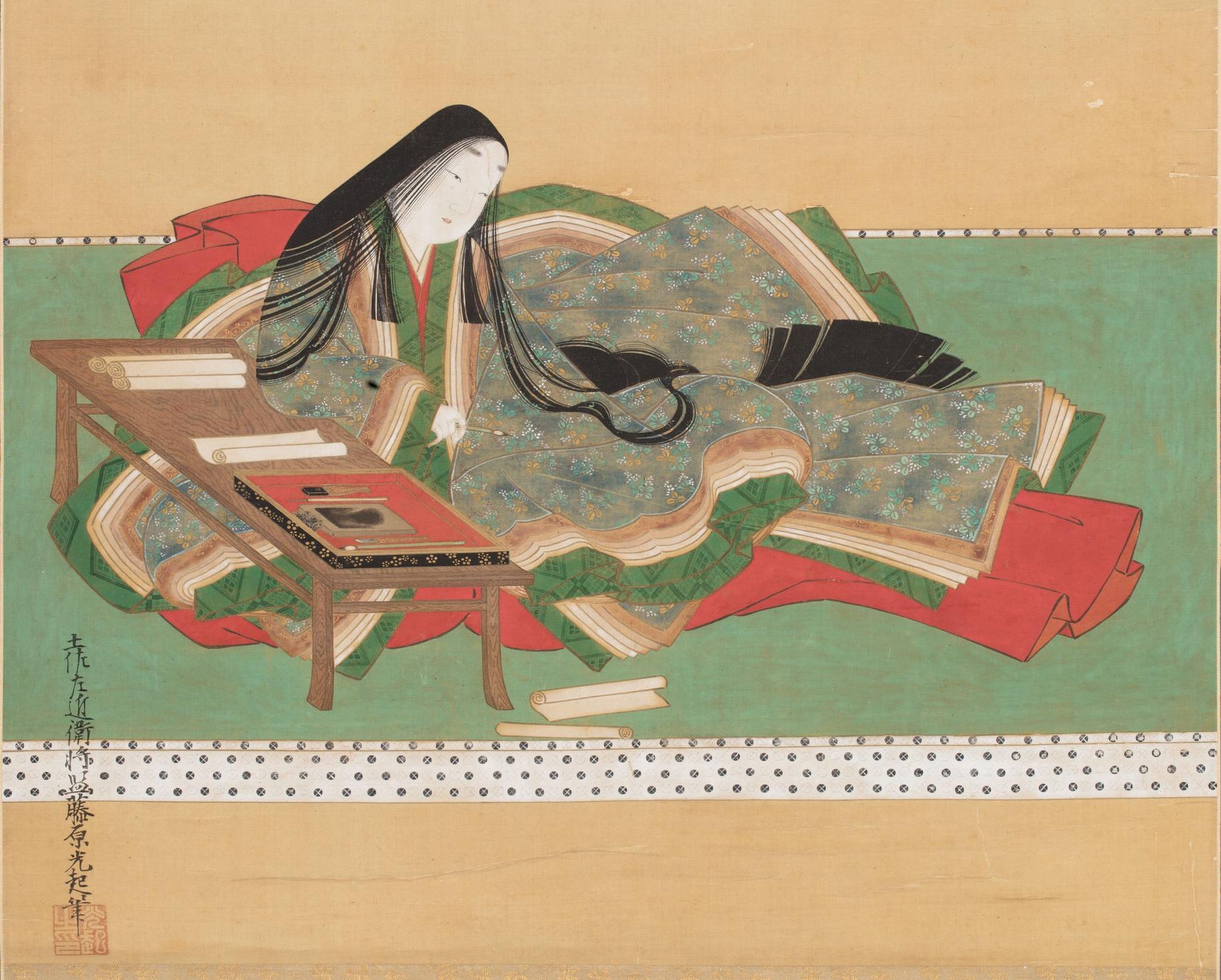
17th-century portrait icon of Lady Murasaki, by Tosa Misuoki
The Japanese preference for white skin crops up again in the writing of Yoshida Kenko in 1324, a poet and court official of the Kamakura period (1192-1333 AD):
The white limbs and skin of a woman…are no mere external charms but true beauty and allure.
Prior to the Edo period (1603-1858 AD), white skin was highly prized, but only really attainable by the aristocracy and nobility. However, as cosmetics became more widely available, Japanese women in general began to covet white skin, including commoners. Putting on make-up became ritualistic, a matter of etiquette and social custom. It was perceived as an expression of modesty as well as a tribute to beauty, perhaps best captured by geishas who appeared around 1730.
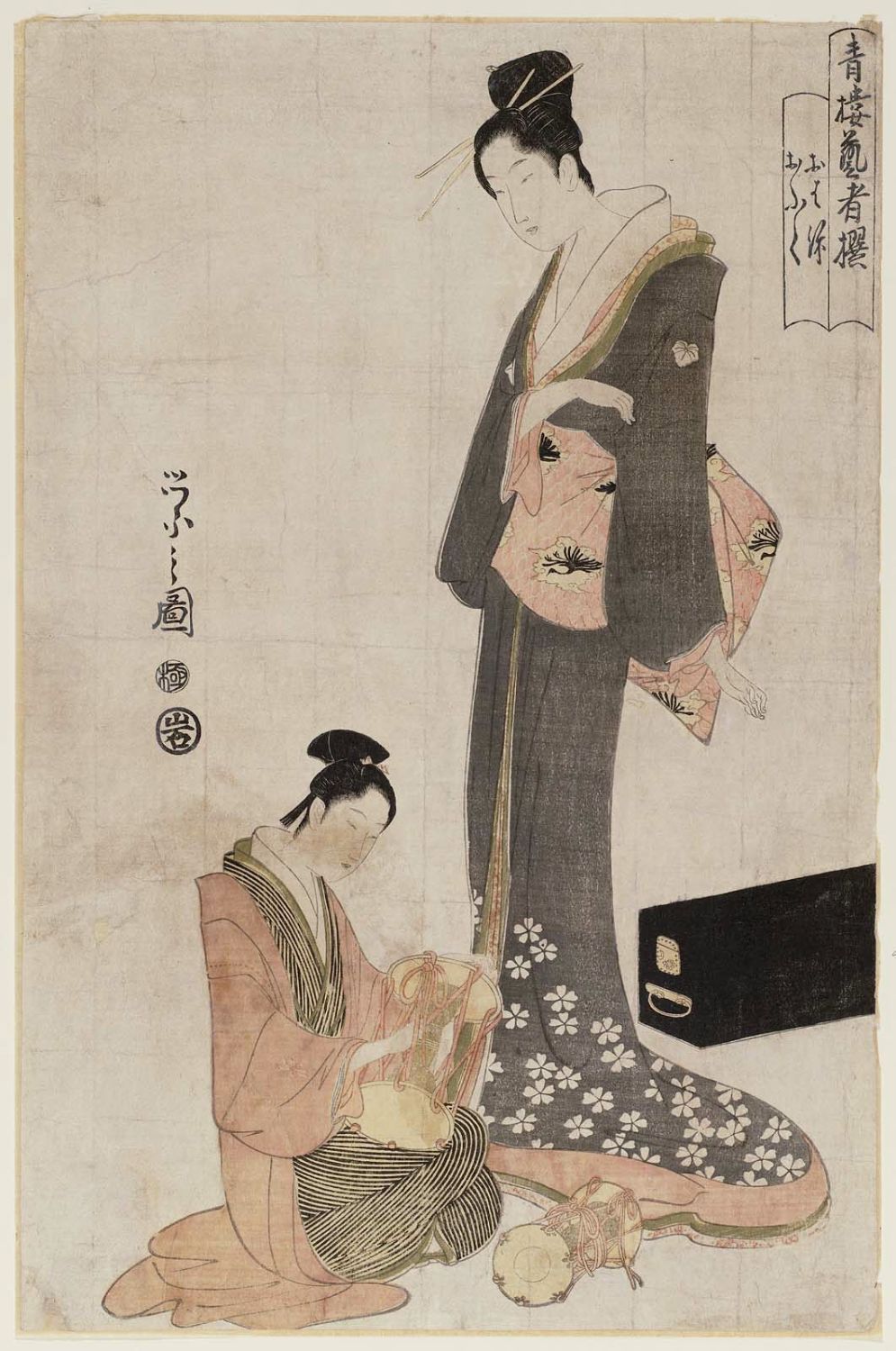
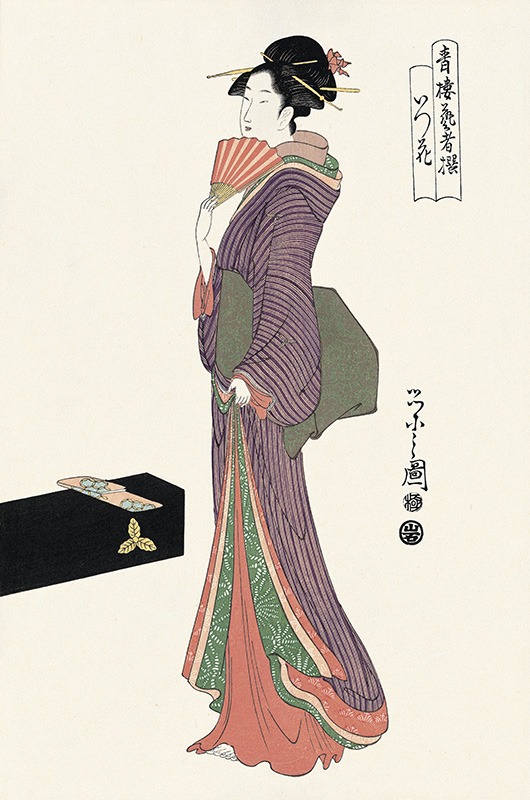
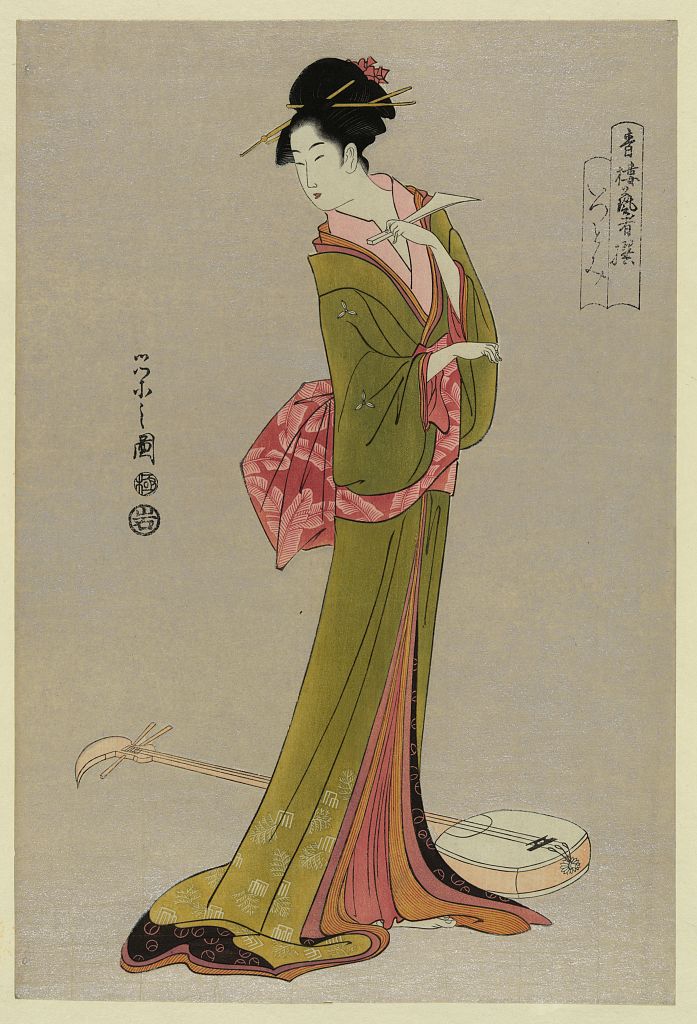
18th-century prints of geishas by Eishi
Far from admiring Western beauty when they encountered it, the Japanese seemed to find many elements of Western bodies quite grotesque. Curly hair and “excessive” body hair, in particular, were both considered bestial and ugly. Only the whiteness of Westerner’s skin was to be admired. Japanese envoys to the United States in 1860 recorded the following in their diaries:
the women’s skin was white…but their hair was red and their eyes looked like dog eyes, which was quite disheartening.
Occasionally I saw women with black hair and black eyes. They must have been of some Asian race. Naturally they looked more attractive and beautiful.
Similarly, when the United States Navy came to Japan to enforce trade in 1853, the Americans were given portraits with exaggerated noses, too-large eyes, and brown hair with skin painted a “washed-out, whitish-ash color” in contrast to the Japanese’s much whiter skin.
It was not until the 1920s that Western fashions and looks (such as curly hair) began to be accepted and even imitated. The following decades of war, nationalism, conquest, and globalization have only muddied the waters of Japanese whiteness as it is discrete from Western influence. But Mikiki Ashikari, an anthropologist specializing in modern Japanese culture, argues that in terms of whiteness, the biggest influence of Western beauty ideals was the supplantation of the painted white face with the natural white-skinned face.
But this change did not diminish the importance of whiteness in Japanese beauty. Ashikari’s research at the turn of the century found that white skin continued to be seen as an integral part of Japanese identity. “Japanese skin” is synonymous with white skin, so much so that calling anyone “dark-skinned” to their face is both insulting and a social taboo. For women, wearing their white foundation (usually several shades lighter than their natural skin tone) is still considered “etiquette” and “common sense;” a woman who does not wear her foundation is either a grassroots feminist or a “non-Japanese.”
“Japanese skin” is synonymous with white skin.
In fact, the Japanese gyaru subculture, in which people intentionally darken their skin, is an explicit rebellion against the traditional mainstream adoration of pale skin. It’s hard to say definitively where gyaru originated, but it’s widely believed to have come from the popularity of the hit American series Baywatch, in which Pamela Anderson and her co-stars flaunted their tanned bodies at the beach. Adherents of gyaru, and its sub-subculture ganguro, who sport an even deeper tan, are generally not viewed positively by the Japanese mainstream, which tends to regard them as rebellious young people who reject traditional beauty standards.
The belief that Japanese whiteness is different (and superior) to its Western equivalent has also survived the tumultuous 20th century. When referencing the widespread use of whitening cosmetics and creams, Ashikari’s respondents claimed that they were not trying to change the color of their skin, but rather to protect their “innate” and “natural” white skin, which all Japanese “imagine that they originally have.” One respondent explained that, “Our preference for white skin…is a domestic matter and has nothing to do with haku-jin [Caucasians]. We and such people are totally independent creatures.”
Thus, when Caucasian models are used in modern advertisements for beauty products, Japanese women do not see Western beauty being forced down their throats – rather, the Western women are conforming to their ideals of beauty.
***
Like the Japanese, the Chinese have a saying that “one white covers up three kinds of ugliness.” The Chinese term, “baifumei” literally translates to “white, rich, beautiful” and is often used to mean “Ms Perfect” or the ideal woman. Chinese history has canonized Four Great Beauties who lived (or supposedly lived) between the 6th century BC and the 8th century AD who all possessed the traditional palette of beauty: white skin and black hair with red lips and cheeks.
The Chinese term, “baifumei” literally translates to “white, rich, beautiful” and is often used to mean “Ms Perfect” or the ideal woman.
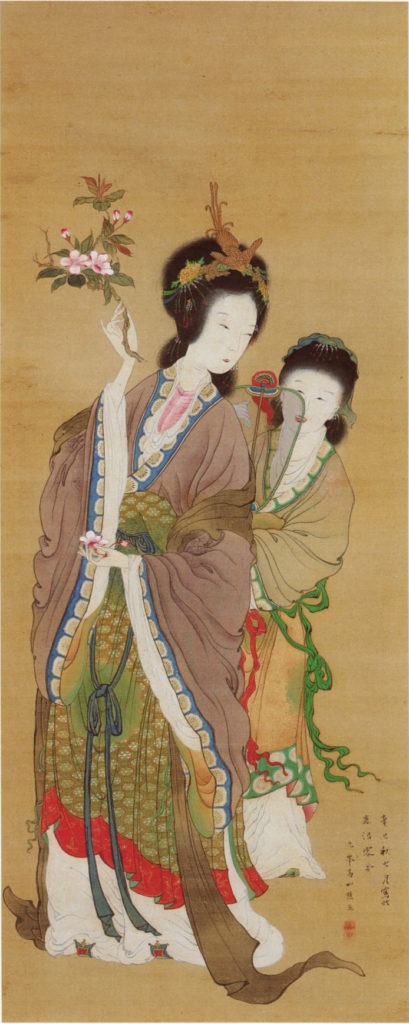
Yang Guifei, one of the Four Great Beauties, in a 19th-century scroll painting by Takaku Aigai
A recent archeological find at the Liujiawa site in Chengcheng County, Shaanxi Province unearthed the remains of white cosmetic powders from as early as 700-640 BC, the Spring and Autumn period. A similar discovery in nearby Lantian County identified freshwater pearl dust in a repository of cosmetic powder and dated it to the Song Dynasty (960-1279 AD). These archeological discoveries show that China has actively pursued white skin for more than 2,500 years.
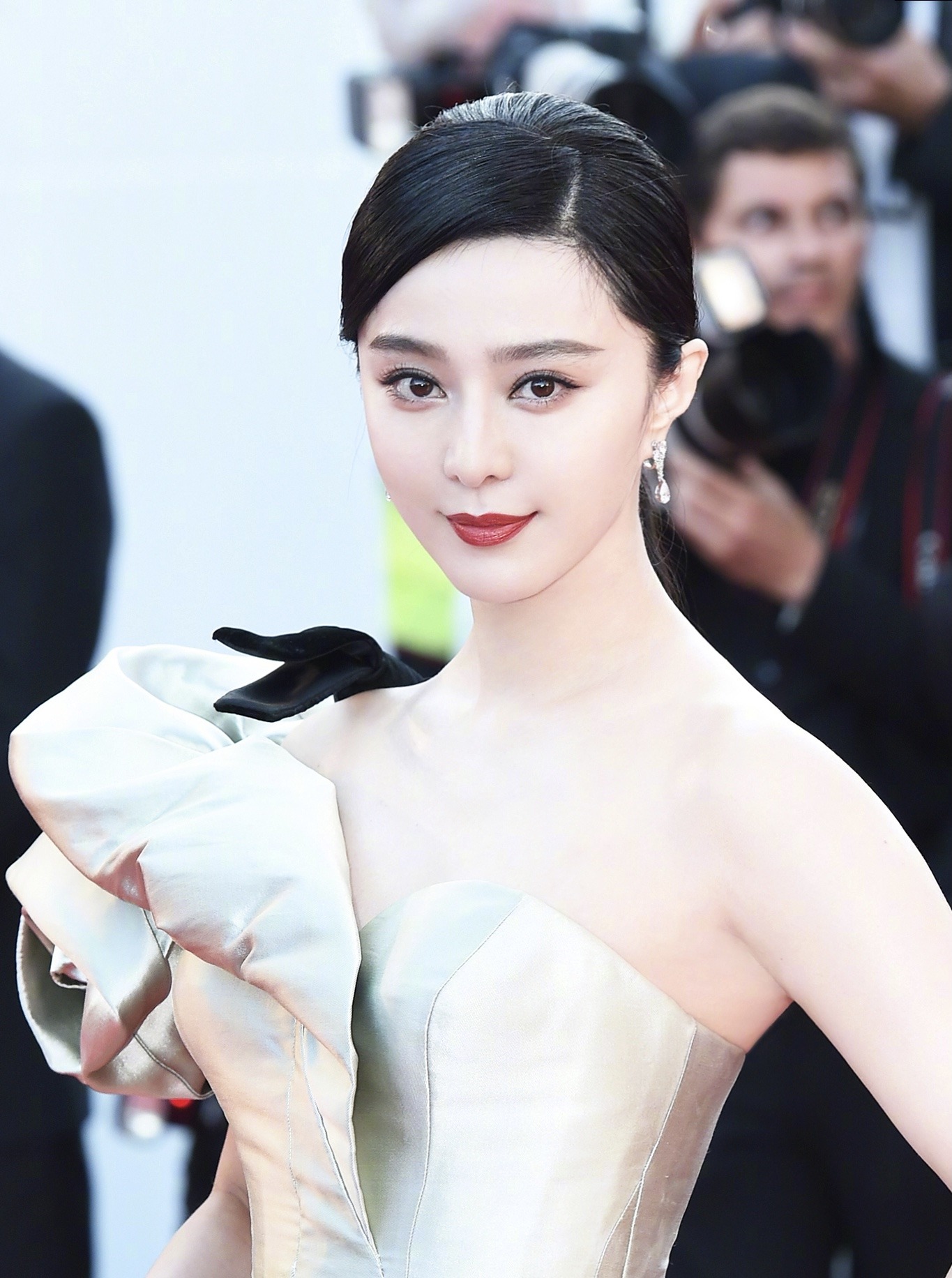
Chinese actress Fan Bingbing (Picture Credit: CookieKiki)
In his book, The Search for the Beautiful Woman: A Cultural History of Japanese and Chinese Beauty, Kyo Cho, Professor of Comparative Culture and literature in the School of Global Japanese Studies at Meiji University, chronicled unsubstantiated claims that women started powdering their faces white as early as the reign of King Wen (approximately 1100 BC). Whether or not the tradition can be traced that far back, at least two forms of whitening powder have been described in various texts between 77 BC and 220 AD. The names of the cosmetics, “fen” (rice powder) and “qianfen” (lead powder), show that not only did Chinese women paint or powder their faces white, they also literally whitened their skin using lead powder, which probably means that both heavily painted and powdered white skin and more natural-looking white skin were considered beautiful.
When looking through Chinese literature, Kyo found exactly zero instances when white skin was portrayed as ugly; if a person was sickly or unhealthily pale, a different word would be substituted for white. Instead, beautiful skin is likened to peonies and snow, and attractive women are described as “powdered.” One poem from the Tang Dynasty (618-906 AD) refers to a group of women’s “white-silk” figures and rhapsodizes about their delicacy and makeup being like a flurry of snow. Awake at Night, a novel of unknown authorship from the 11th century, describes beauty as follows:
In striking contrast against the deep hue of her unlined robe, her white skin was unclouded as though snow was rolled into shape.
A likeable person, white to the extent of translucency…underneath her parted hair let down from the forehead along the cheeks, white skin showed in a lovely manner. She appeared truly elegant.
Her complexion was endlessly white and clean…her face looked beautifully clear.
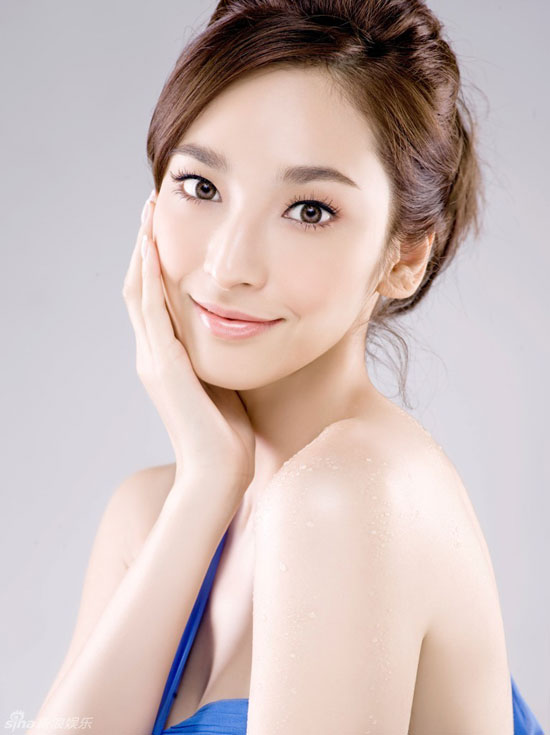
Taiwanese actress Pace Wu (Picture Credit: stylegirls)
This traditional preference for white skin has continued into the modern era, and has perhaps accelerated with the advent of China’s “meinü jingji,” or beauty economy. In a beauty economy, beauty becomes a commodity; and like other commodities, it can be purchased.
Increasingly, beauty is seen as integral to success. There is even a term, “qingchunfan” or “the rice bowl of youth” that captures a range of jobs and opportunities that are only available to young people, especially beautiful young women. Competition and ambition are so fierce that a 2018 study found that 83% of respondents believed that beauty has a daily effect on quality of life.
Today, people brag about spending half their monthly income on skincare and cosmetics because in modern China white skin is not just an aesthetic, but a ticket to a better life.
***
Korea has also long favored white skin, but Koreans tend to see makeup as more “spontaneous” and “natural” than the heavier, “showy” makeup in the Chinese and Japanese traditions.
Beginning in the Silla Dynasty (57 BC-935 AD), beauty was seen as both external and internal. The saying went: “within a beautiful body rests a beautiful soul.” Ritualistic bathing explicitly linked cleanliness to beauty.
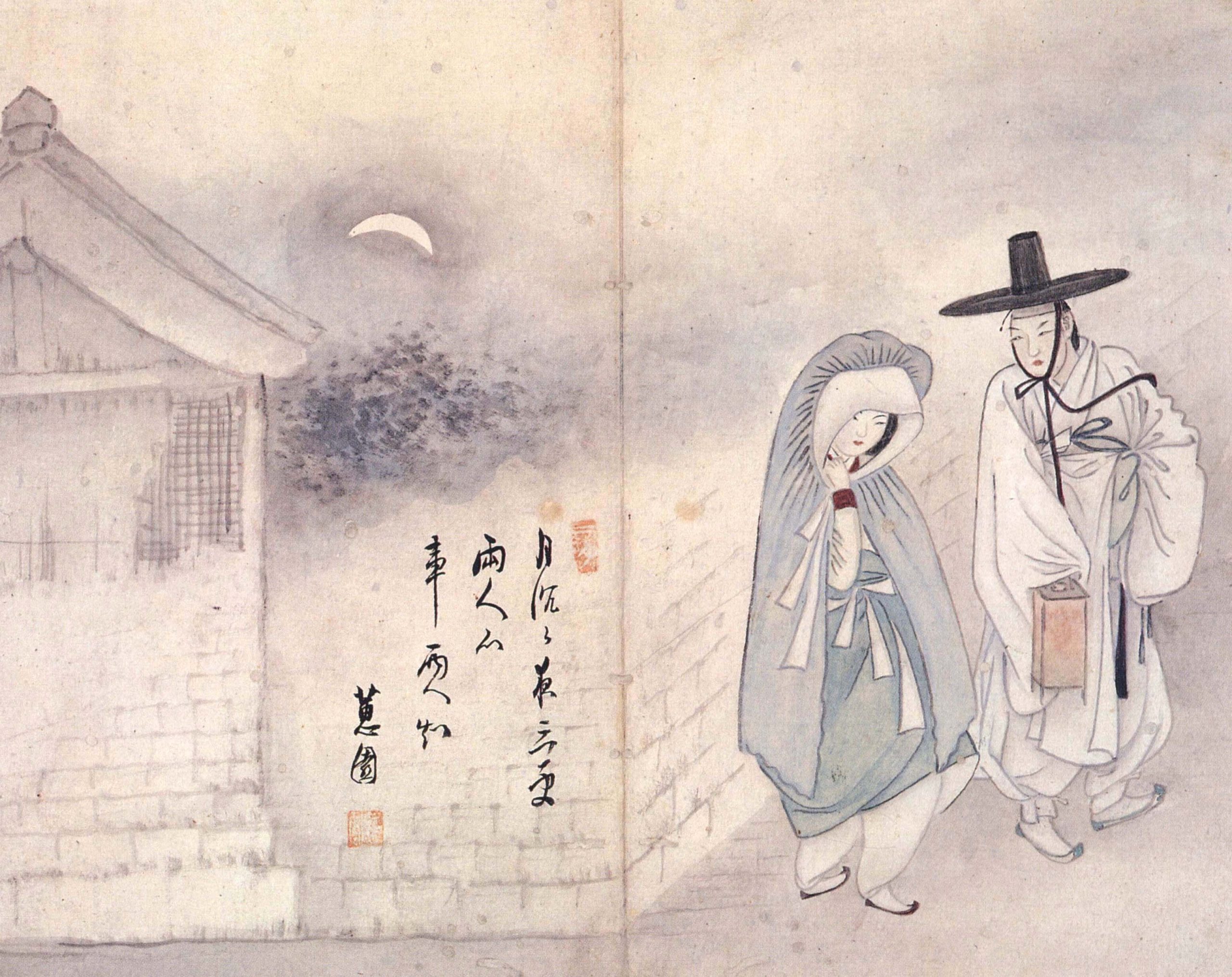
The lovers under the moon, 18th-19th century painting by Sin Yun-bok
Koreans, then, have one of the earliest known obsessions with not just powdered white skin, but cleansed and “naturally” pale skin. The Coreana Cosmetics Museum in Seoul has documented how Korean women ground mung beans, or “jodu,” to create a natural cleansing agent. They also used apricots and peach oils to reduce liver spots and freckles and made face creams mixing ground rice and millet with oil.
Koreans have one of the earliest known obsessions with not just powdered white skin, but cleansed and “naturally” pale skin.
This trend continued into the Goryeo Dynasty (918-1392 AD) where women applied only thin makeup and focused on skin care to achieve a “clear,” or pale, complexion. In the subsequent Joseon Dynasty (1392-1897 AD), the love of white skin was codified into the saying “sambaek, samheuk, samhong:” “three white, three black, three red,” where the three whites are skin, teeth, and eyes. White skin was especially prized for being blemish-free and “flawless,” the canvas of the other ideals.
For modern Koreans, K-beauty continues to focus on “clean” white skin, and the beauty industry has become entwined with Korean identity and the economy. After being a “cultural importer” for decades following World War II, the recent “Korean wave” of exporting television (K-drama), music (K-pop), and cosmetics (K-beauty) stirs nationalistic pride. The commodification of beauty found in China and the social performance of beauty in Japan are combined in Korea to create a culture that perceives beauty as both advantageous and “polite.” Being beautiful is about being respectful towards the people who have to look at you.

K-pop heartthrob Han Seung-woo (Picture Credit: 뉴스인스타 (News In Star))
Cosmetic surgery has also become an acceptable extension of this pursuit of beauty. Injectables and procedures to whiten skin and surgery to change the structure of the face are widely available and desired, so much so that Korea is now internationally recognized as a destination for cosmetic enhancement for having the most advanced and nuanced techniques, specializing in the differences between Western and Asian patients. Several medical tourism services even emphasize the link to traditional Korean beauty, incorporating elements like “makgeolli,” a rice-based liquor believed to have naturally skin-whitening effects.
Far from aping Western ideals, Koreans believe that the modern trend towards beautification as “self-care” actually originated in Korean beauty aesthetics. Koreans were using gourd-juice as moisturizer, bean paste as a cleanser, and peppermint extract for stimulation as early as the Joseon period, and their emphasis on clear (rather than painted) white skin has only grown with modern beauty practices.
***
In all three of these East Asian civilizations, we can see that whiteness existed outside Western notions of pinky-peach alabaster skin; it is only the West’s misguided sense of ownership over whiteness that claims responsibility for the harm being done by the ideal of pale skin. The ensuing attempts to right the perceived wrongs of colonialism are, far from helping, instead advancing a more insidious form of imperialism.
It is only the West’s misguided sense of ownership over whiteness that claims responsibility for the harm being done by the ideal of pale skin.
In fact, Westerners remain so convinced that the rest of the world is trying to copy them that they have missed all evidence to the contrary: in the West, it is not pale skin that’s desirable, but a glossy tan.
A study in 2001 hypothesized that whiter skin would be most attractive, but instead found that all respondents (54 Caucasian males) preferred suntanned skin, which they described as “healthy.” Far from buying bleaching products, Europeans are buying self-tanning products to the tune of $1.47 billion a year. Unlike Asians, Africans, and Indians who are buying “bihaku” products designed to fade and prevent tanning, Europeans and Americans are expressing envy for the browns and coffees of other nations’ skin tones.

Second generation Asian immigrants have commented on the confusion they feel when their parents urge them to have light skin when the surrounding culture so clearly prefers tanned skin. Kyo Cho wrote that it is “beyond Chinese people’s comprehension that Western women sunbathe or go to tanning salons.” Far from sunbathing, some Chinese women go to the beach in “face-kinis” and full-body suits to protect their skin from the sun. Similarly, Ashikari found that Japanese women are horrified by sunbathing and consider Western women who sunbathe “unthinking,” attributing the “superior” Japanese white skin to their diligent skincare routines.

Women wearing face-kinis at the beach in China (Fashionby He)
Ultimately, when it comes to whiteness, the West overstates its own importance. Just as the West did not create the social hierarchies, religions, and cultures that privileged whiteness in other parts of the world, they cannot now dismantle them.
***
A comprehensive study in 1986 of 312 cultures found that 51 used skin color as a measure of attractiveness, and of those, all but 4 favored lighter skin. However, it is impossible to know how much of this preference is inherent and how much is socially constructed.
When it’s hard to untangle an innate preference from a socially-constructed one, the scientific world turns to babies. Because infants have not had time to absorb social mores, their instinctive assessments are as close to insights into inherent human beauty preferences as can be achieved.
Consequently, there have been several studies conducted with infants to determine if they are able to discern the difference between attractive and unattractive faces (as pre-judged by adults). In all cases, the infants looked longer at the faces pre-judged to be attractive than at those deemed unattractive. The only test that compared faces of different ethnicities proved that infants preferred faces of their own race, but was only conducted with Caucasian babies, and so cannot be considered proof that all races would prefer Caucasian faces.
If babies cannot enlighten us, the next scientific cab off the rank is sex.
Research suggesting that paler skin is inherently more attractive links paleness to youth and thus fertility; the more youthful the skin, the paler it is (when compared to an aged version of itself). This theory was posited by Charles Darwin as early as 1871 in his essay, “The descent of man and selection in relation to sex.” A host of other studies in the Journal of Comparative Psychology have found that women’s skin is lighter when they are fertile (or near ovulation), whereas their skin darkens when they are pregnant, on the contraceptive pill, and even at infertile times of their natural menstruation cycle. Another study in 2004 investigated whether women were perceived as more attractive near or during ovulation by comparing photos of the same woman; in all cases, both men and women found the photos of the woman’s face taken when she was ovulating or close to ovulating more attractive.
However, it is one thing to say that comparatively paler skin is more attractive on the same woman and at different ages; it is another to say that paler women generally look younger and more fertile than darker women and are thus more attractive. Additionally, there is a difference between comparatively paler skin and excessively white skin like the traditionally powdered faces of ancient China and the contemporary applications of foundation in Japan.
Kyo Cho grappled with this question in his book and ultimately concluded that there is no physiological reason to find white skin beautiful. Instead, he linked pale skin to patriarchal culture, claiming that the separation of domestic and public spheres reinforces the need for women to display pale skin as proof of their adherence to their society’s prevailing gender norms. As evidence, he referenced the classical period in Ancient Greece (5th-4th centuries BC) in which (aristocratic) women began to be confined to their homes, turning their skin extremely pale. He went on to note that matriarchal societies rarely display this preference for pale skin.
This correlates with Ashikari’s research in 2005 into Japanese culture. She found that for Japanese women, the putting on of makeup was considered most necessary when exiting the home, or “uchi,” to enter the male-dominated public sphere, “soto” – literally outside. The white face was a symbol of their femininity, defined in opposition to Japanese masculinity.
When a 2017 article in Sex Roles interviewed East Asian women about their preferences for white skin, multiple respondents tied white skin to traditional femininity, explaining that:
“Lighter skin…symbolizes that you’re indoors. It ties you to the home. Like, you cook, you clean.”
“I want to appear like I am…good at housework.”
“The stereotype is that [white-skinned women] are more obedient.”
So perhaps there is sufficient evidence to suggest that white skin in women is attractive because it demonstrates a woman’s domesticity and submissive nature. However, this explanation does not account for male beauty standards that also privilege whiteness (common in Asia), nor does it make room for the changing notions of femininity as women increasingly enter the workforce and eschew traditional roles as wives and mothers.
Ultimately, we don’t know why whiteness is seen as more attractive in most cultures, and the theories that exist have only explained parts of the phenomenon. What we do know is that the West has taken responsibility for this beauty preference despite all evidence to the contrary.
